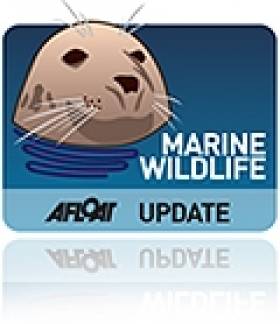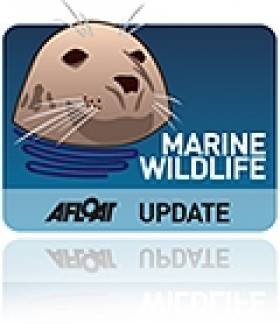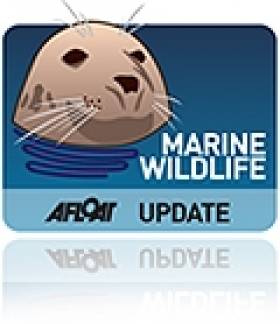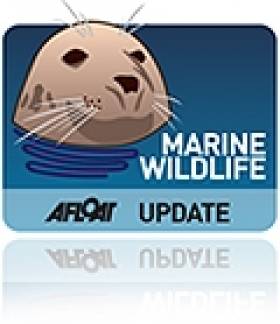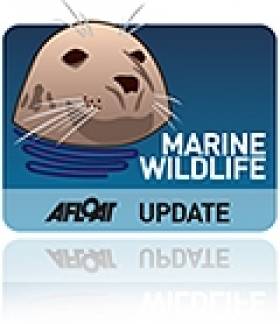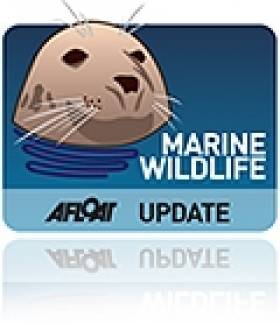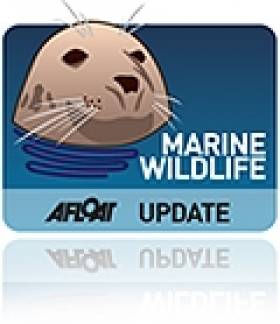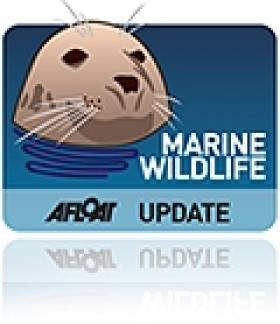Displaying items by tag: marine wildlife
Storm Surge, Flooding Concerns Expressed At Galway Port Plan Hearing
#GalwayPort - Severe flooding and storm surges will be the reality for Galway on a regular basis if the project to extend the port goes ahead as planned, the oral hearing into the scheme has heard.
According to The Irish Times, various groups, including Ireland's national trust An Taisce, have expressed fears over the risks to the city and its environs from a rise in sea levels and increased river flow that would be caused by the €126 million port expansion.
These concerns come in spite of the city's harbourmaster stating a year ago that flooding events would occur more regularly "with or without" the port development.
Marine conservation was also a hot button topic at the hearing yesterday (Wednesday 14 January) as Inland Fisheries Ireland and others outlined the potential ill effects on already vulnerable wild salmon stocks and other species in Galway Bay.
The Irish Times has more on the story HERE.
Migratory Swan Survey Set For This Weekend
#SwanCensus - Only a handful of Bewick's swans have been recorded in Ireland this winter ahead of a major international survey of migratory swans this weekend.
As RTÉ News reports, just three of the visiting waterfowl species have been sighted in Wexford so far, amid concerns that climate change is seeing them stay put in their Siberian homeland.
Whooper swans will also be counted in the latest edition of the five-yearly survey across a thousand coastal and waterside sites in Ireland this weekend, to see how numbers stand now against the 15,000 birds recorded in 2010 - half of the entire breeding population in their Icelandic home.
RTÉ News has more on the store HERE.
Courtown Sees Off Latest Rescue Seals
#MarineWildlife - After last week's good news of a seal pup rescue in Northern Ireland, on the other end of the island a number of similar rescue seals got a fresh start for the New Year.
The Gorey Guardian reports on the release of five seals - named Flotsam, Misty, Skipper, Marina and Ariel - by the Courtown Seal Rescue Centre from the Wexford town on 2 January.
The marine mammals in question were picked up from beaches along the east coast from Ballinesker to Rosslare in various states of injury and distress, and rehabilitated over a number of months.
In the case of Skipper in particular, it was cheering to see him return to the waves fighting fit months after he was discovered emaciated with propeller wounds.
The Gorey Guardian has more on the story HERE.
Whale Genes Could Hold Secret To Longer Lifespan
#MarineWildlife - The secrets to a longer lifespan could be hiding in the genes of the bowhead whale, according to a new scientific study.
Silicon Republic has news of the paper involving scientists from Dublin City University that explores the genome of the Arctic whale species, thought to be among the longest living animals on earth.
As mammals like humans, the "molecular mechanisms underlying their exceptional longevity and resistance to age-related disease are of particular interest for human health," says Dr Mary O'Connell, a contributor to the study.
Key among the findings were a set of genes distinct from the closely related but shorter-lived minke whale that are associated with repairing DNA and resistance to cancer.
The next step in this research is to see if these genes can impart resistance to ageing when adapted to different models, which could show their potential for anti-cancer therapy in humans.
Silicon Republic has more on the story HERE.
Exploris Sees In New Year With Seal Pup Rescue
#MarineWildlife - A moulting seal pup is in good hands at Northern Ireland's only seal sanctuary after being separated from its mother in Strangford Lough.
As the Belfast Telegraph reports, the pup – one of many orphaned in the lough during bad weather – is being cared for by the experts at the Exploris aquarium and marine wildlife sanctuary in Portaferry, which itself was saved from closure after local councillors agree to a £1 million funding package last autumn.
#MarineWildlife - 2014 brought us some offbeat marine wildlife stories on Afloat.ie, from a sea lion leaping onto a speedboat to nab himself a fish, to a French 'bad boy' dolphin's tour of Ireland's west coast.
We also learned that whale poo could be the key to combating climate change, and who can forget the giant 'shrimp' pulled from Florida's waters, or the surfing pig making waves in Hawaii?
But there some other weird and wonderful discoveries that we missed. Take for instance the strange mushroom-shaped 'living fossils' found in deep water off Australia over the summer, according to Discovery News.
Two species of the barnacle-like organisms were discovered by researchers from the University of Copenhagen living more than 3,000 feet below sea level, and "represent an early branch on the tree of life".
More recently, culture blog Boing Boing shares a video of conjoined Pacific gray whale calves that washed ashore in Mexico, a popular birthing ground for the species safe from their main predator, the orca.
Still, as exiting as these events are, the day-to-day work for most marine science experts is more down to earth but no less important, as marine biologist Monica McLaird gives an account of her average day's work to Lisburn Today.
Lost Seal Being Treated For Pneumonia
#MarineWildlife - The grey seal who surprised Merseyside in the days before Christmas by getting lost in a field some 30km from the Irish Sea is now being treated for pneumonia, as The Guardian reports.
"He is much more settled now and still looks very sorry for himself, but other than that he is quite lively," said Sue Levings of the RSPCA's specialist seal facility in East Winch, Norfolk, where the young seal – named Dumbledore after the Harry Potter wizard – is being looked after.
As previously reported on Afloat.ie, the marine mammal was spotted by a dogwalker in a muddy field at Newton-le-Willows, north of Warrington and far from his species' usual seaside haunts.
Young Seal Found Lost & Exhausted In Muddy Field Far From Sea
#MarineWildlife - A very lost seal has been rescued after it was found exhausted in a field some 30km from the Irish Sea in northern England yesterday (22 December).
Yahoo News! reports that the young male grey seal was spotted by a dogwalker in a muddy field at Newton-le-Willows in Merseyside - and after some hours of attempts by rescuers, it was coaxed into a trailer and taken to a local wildlife hospital.
It's believed the young marine mammal swam up a tributary of the River Mersey from the Irish Sea on the trail of fish before getting hopelessly lost in the landlocked village north of Warrington.
Fungie Surprises Seaweed Farmers With Spectacular Leap
#MarineWildlife - A pair of seaweed farmers made a friend off the Kerry coast recently when Dingle's resident dolphin decided to join them for a swim.
Mail Online has some remarkable photos of the moment when Fungie, the 40-year-old cetacean who's lived in Dingle for more than three decades, leapt out of the water alongside David Millard and Mike Murphy's boat as they made their way home from the latter's seaweed farm workplace.
"As he blasted out of the water, we got such a shock as he was so fast, so high and so close to us. The boat is only about 16 foot long and he'd be nearly the same length," said Millard.
Mail Online has more on the story HERE.
Locals Look Out For Seal Pup In Malahide
#MarineWildlife - The Dublin People has a heartwarming story of kind Malahide locals looking out for a lone seal pup earlier this month.
The little one was found by swimmer David Tuite sitting alone on a rock at Low Rock near the north Co Dublin town, and "seemed totally relaxed and unbothered".
Nevertheless, Tuite got on the phone and was connected with Seal Rescue Ireland, who assured him that the juvenile was just fine - a useful reminder to people not to get too involved if they seen any marine wildlife they think might be in distress.
The Dublin People has more on the story HERE.

